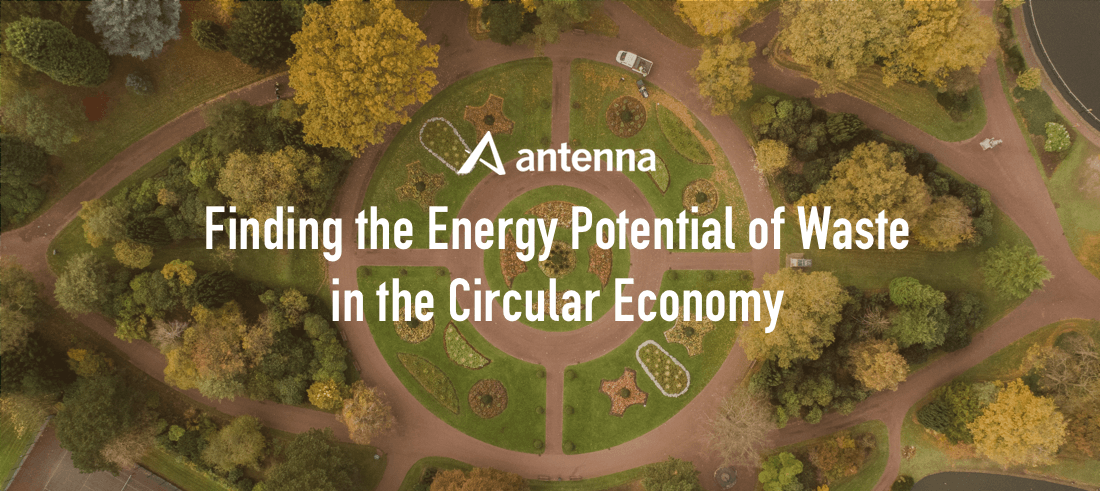
The circular economy is about matching waste output flows with processes and applications that can use those outputs as inputs for creating something new. We often limit this concept to recycling waste materials into new products, but there is huge potential for the energy sector to participate in the circular economy by turning waste into energy sources or other useful technologies.
Waste combustion is the most well-known waste-to-energy practice. Generally, one ton of municipal solid waste (trash from cities and towns) can generate about 550 kilowatt hours (kWh) of energy. In the United States there are currently 86 facilities that recover energy from solid waste combustion. Combined, they have the capacity to produce 2,720 megawatts (MW) of energy per year from nearly 28 million tons of waste, about 10 percent of the total solid waste generated in the US every year and enough energy to power almost US 450 000 homes for one day. With the national recycling rate still hovering below 35 percent, circular solutions that divert waste from landfills are welcome, and when diversion methods also produce energy, it means double benefits for the circular economy.
The next generation of waste-to-energy are technologies such as those pioneered by alternative energy and chemical producer Enerkem are producing fuels and other energy commodities. Enerkem’s process takes the carbon from non-recyclable and non-compostable waste and converts it into ethanol – which can be used as an alternative fuel source – and methanol – which can be used in the manufacture of secondary chemicals. As Enerkem’s process uses waste that would otherwise need to be landfilled it does not eat into feedstock for the recycling industry, a common criticism levelled against waste combustion.
While these solutions address municipal solid waste, another form of waste that we think of much less often but produce every day is organic human waste. After human waste goes through the wastewater treatment process, the resulting solid materials are known as biosolids, and there are very few sustainable options for disposing of them. Recently, a train carrying 10 million tons of biosolids produced in New York and New Jersey to be disposed of in Alabama set idle for weeks, infuriating local residents with its stench. The practice of sending biosolids from the northeast to a rural area of Alabama had been going on since 2017 but halted when the Alabama town where the biosolids were to be landfilled filed an injunction to halt the transport of smelly waste within its city limits.
Transporting our treated human waste to poorer parts of the country is not an equitable or sustainable approach. Drylet, a wastewater remediation technology company uses its proprietary microbial solution to reduce biosolids – making their volumes more manageable for cities, especially in combination with other circular solutions to biosolids management. For example, the Newtown Creek Wastewater Treatment Plant in New York City uses its biosolids for energy production by combining pre-processed organic food waste with biosolids from the plant to increase the production of biogas. Through a collaboration with local natural gas utility National Grid, the utility will convert the biogas by-product into enough renewable natural gas for 5,200 New York City homes. In addition to generating a renewable energy source, the project will help reduce the amount of food waste and biosolids New York City sends to landfills, or to other parts of the country. In fact, as part of New York City’s OneNYC sustainability plan, the city has a goal of zero-landfilling of biosolids by 2030. With New York City producing 1,200 tons of biosolids a day, circular solutions like waste to energy help address this smelly problem.
While municipal wastewater can be a valuable, albeit gross, source of energy, industrial wastewater also has a very valuable resource recovery potential. MGX Minerals has tapped into this by recovering lithium – critical to the lithium-ion batteries that power electric vehicles and energy storage – from wastewater produced by the oil industry. MGX’s technology combines wastewater treatment with lithium extraction, helping to address the vast amounts of wastewater the fossil fuel extraction industry produces – up to 70 billion gallons a day – and providing a more sustainable alternative to conventional lithium mining. Demand for lithium is skyrocketing along with the electric vehicle market, and MGX has provided a circular solution to dealing with wastewater from the fossil fuel industry that supports clean energy technology.
Waste can be gross, but it is also a valuable resource. The circular economy will help us rethink how we view waste and its material and energy resource potential, helping to solve what we do with our waste and where we get our energy in one perfect circle. Antenna Group is proud to be the marketing partner for the US Chamber of Commerce Foundation’s Fourth Annual Sustainability and Circular Economy Summit, with the theme Translating Value to Ignite Action. We’re offering a 20% discount code at registration to help you get there. Register today with the code SUSTY20 and learn how the future is circular.